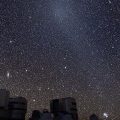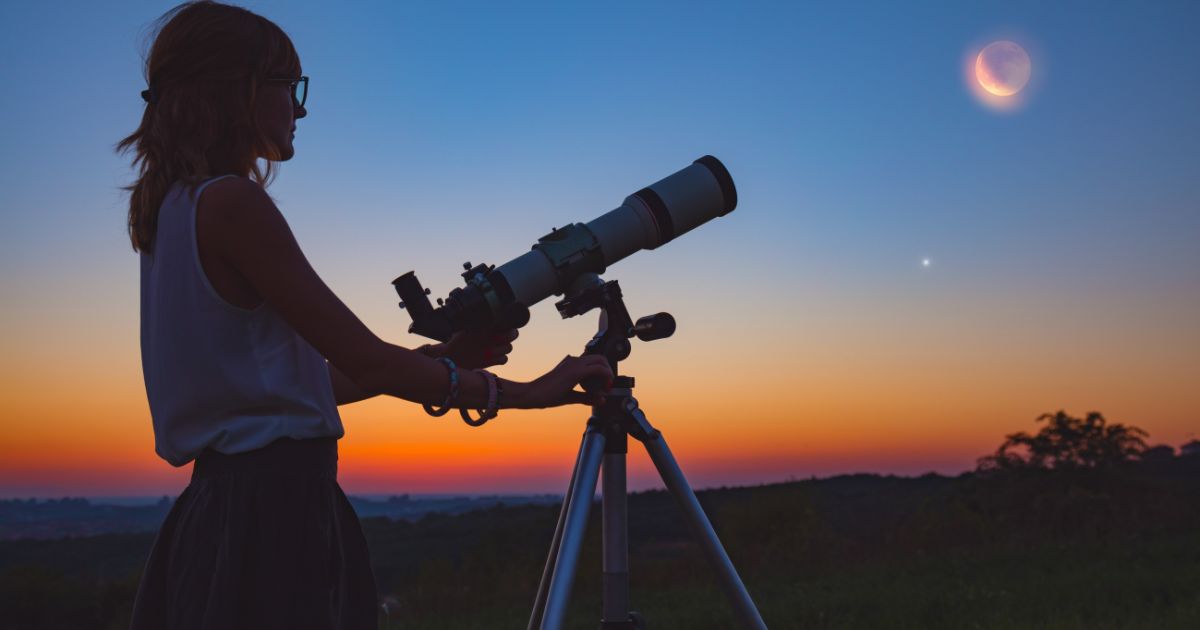For guidance on reading the tables for beginners – please go here
Saturn rises in the east at 10pm. Although easily bright enough to see with our unaided eyes, you will need a small telescope to make out its rings.
The main celestial event this month is the Perseid Meteor Shower that peaks during the night of August 12/13. However stragglers will be visible for at least a week before and after this night. They will appear to radiate from Perseus that is rising in the northeast. During the third week of the month, the Milky Way will be straddling our meridian at 10pm – extending from the southwest to the northeast. To help you follow its course: start with Sagittarius (The Tea Pot) in the south, and arc up into the northeast and the constellation Perseus.
NOTABLE EVENTS
Aug 3 Saturn rises in east at 10pm
Aug 4 New Moon 07:13
Aug 10 Sun enters Leo
Aug 12 First Quarter Moon 11:19, Perseid Metors
Aug 15 Vega on the meridian at 10:02pm
Aug 19 Full Moon 14:26
Aug 26 Last Quarter Moon 05:26
MONTHLY TABLE

Main Meteor Showers
Meteor showers are best observed after midnight when our hemisphere is ploughing into the meteor stream. Although the duration of the most active portion of the shower is short, some shower meteors can be seen many days on either side of maximum.
There are about a dozen significant meteor showers each year. This is a list of only the three major ones that have different “characters”.
The Quadrantids radiate from an area 20-degrees east of the Big Dipper’s handle. The short duration for the shower is somwhat balanced by the possible bright “fire balls” that are produced. Meteor showers are best after midnight. However the last quarter Moon rises at about 23:30.
This makes this year only marginal for observing the fainter meteors of this shower.
The Perseids are the premier shower of the year. Its long duration will bridge cloudy nights. We have the first quarter Moon this year which will set at about 11 pm leaving the rest of the night dark for meteor observing. This peaks during the night of August 12/13.
The fainter Geminid meteors will be “washed out” by the full Moon, so this will be an unfavourable year.

Dates for the Phases of the Moon

Entries are in Eastern Time and only require time zone correction. Do not use the correction from the “Ottawa-Time” table. Saskatchewan and parts of BC and Ontario do not use daylight savings. In these regions, subtract 1-hour from these times from March 10 to November 3.
Planetary Configurations
When at Opposition, planets will appear on the opposite side of the sky from the Sun – very roughly on the meridian at midnight. Conjunctions are when the planet has the same “longitude” as the Sun. A Superior Conjunction is when the planet is on the other side of the Sun, and an Inferior Conjunction is when it is between the Earth and the Sun. Only Mercury and Venus can be at Inferior Conjunction. Maximum elongation is when Mercury and Venus appear farthest from the Sun in our sky. This occurs either in our morning eastern sky (mor.) or our western evening sky (eve.). Do not apply the Ottawa-correction times to the times in this table.

Prominent Constellations by Seasons


Brightest Stars

One of Canada’s foremost writers and educators on astronomical topics, the Almanac has benefited from Robert’s expertise since its inception. Robert is passionate about reducing light pollution and promoting science literacy. He has been an astronomy instructor for our astronauts and he ensures that our section on sunrise and sunset, stargazing, and celestial events is so detailed and extensive it is almost like its own almanac.













